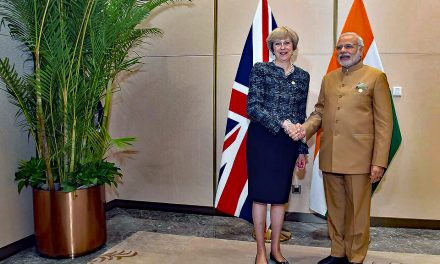Thirty years on from the horrific events of 1984 that took place across Punjab and India, the true story behind Operations Bluestar, Woodrose and the Delhi Genocide remains untold. It is a sensitive topic for both Punjabis and Sikhs alike of all generations, wherever they might be in the World today, and any news or media attention is jumped upon instantly for the insights that it may provide. In that regard, newly released records at the National Archives in London which prove that the British Government was involved in planning the military assault on Darbar Sahib have spread rapidly throughout social media this morning.
The documents in question are part of a series of letters depicting UK-Indian relations that were released a fortnight ago. They consist of correspondence between members of the Cabinet and their senior staff – such items are usually released to the public 30 years after their creation – and images of the two particular documents of interest were published on the Stop Deportations website along with a summation of their importance. The Member of Parliament (MP) for West Bromwich East, Tom Watson shared his concerns about the information contained in the documents and has stated that he, “is writing to the Foreign Secretary about this matter and will raise it in the House of Commons,” expecting a full explanation.
The correspondence between Private Secretaries to the Home Secretary and Foreign Secretary in the early months of 1984 acknowledge that an SAS advisor had travelled in secret to India to offer advice and assist in drawing up a plan to invade the Darbar Sahib. These are not new revelations; British involvement (as well as that of Russian intelligence) has been suspected by a number of writers dating back to as early as the latter months of 1984 itself, but this is the first irrefutable evidence of such collusion to be presented.
The questions it raises are numerous particularly for the Sikh Diaspora in the United Kingdom who should no doubt now be demanding answers from our own Government and Parliamentarian representatives as to how and why they deemed interference in Punjab-State affairs a worthwhile activity. However, of greater interest should be what actions the British Government took to monitor and control the “domestic implications” that they foresaw following an assault on Darbar Sahib. It is again no secret that a number of prominent Sikhs in the United Kingdom were acting in private and/or third party interests in the years that followed 1984, all of which was intended to halt political activism and progress within the Sikh Diaspora; indeed some of them continue to enjoy positions of influence today – perhaps they will be sleeping uneasily tonight knowing that it is only a matter of time before their own incendiary purposes are revealed.
The build-up to what eventually took place in June of 1984 had begun years earlier, decades even, and so the advice of any British Special Forces coming early in 1984 is limited in scope. The full-scale model of the Darbar Sahib that had been built in the Chakrata-Mussoorie range, as well as the mobilisation of troops into key towns and cities for the all-too-often unmentioned Operation Woodrose had been planned for well in advance, as had processes to ensure a media blackout and total curfew on travel. Nevertheless, evidence that shows there was collusion of some sort between the British and Indian Governments heralds a new dawn for better understanding the battle for Amritsar and the wider events of 1984. Activists and researchers (including myself) will be buoyant in the knowledge that the truth of what took place and why will find its way to the public’s ear, some way, some how. Thirty years may have passed, but the Truth is still out there.





